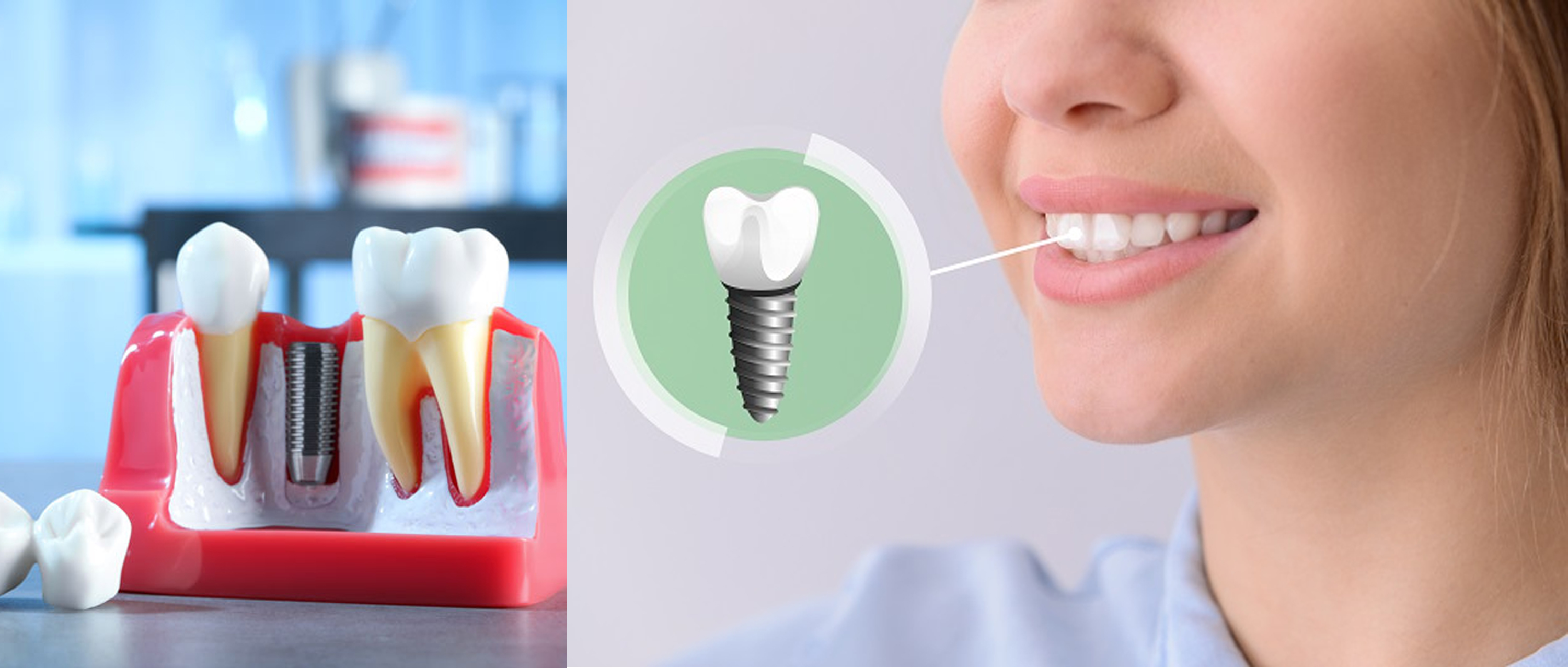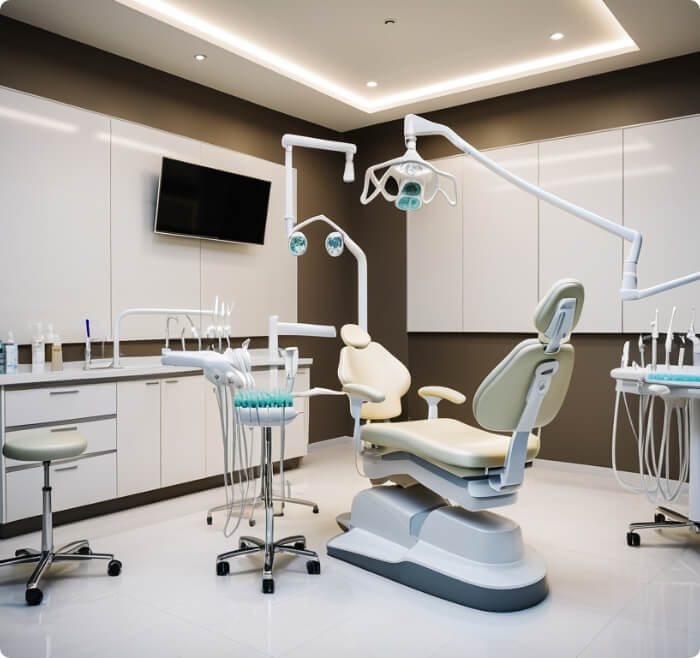Dental Implants: A Complete Guide to Procedure, Costs, and Recovery
Dates: 2025-04-09
View:
Dental implants have become one of the most popular and effective solutions for replacing missing teeth. Whether due to an accident, decay, or aging, losing a tooth can significantly impact both your oral health and confidence. Fortunately, dental implants offer a durable, natural-looking alternative to traditional dentures or bridges. In this complete guide, we’ll cover everything you need to know about dental implants — from the procedure and costs to the recovery process.

What Are Dental Implants?
Dental implants are titanium posts that are surgically placed into the jawbone to serve as a foundation for replacement teeth. Unlike dentures or bridges, which sit on top of the gums, implants integrate with the bone, providing a secure and permanent solution for missing teeth. Over time, the implant fuses with the bone in a process known as osseointegration.
Benefits of Dental Implants:
Natural Look and Feel: Implants closely mimic the appearance and function of natural teeth.
Improved Oral Health: Since they are placed directly into the jawbone, implants help prevent bone loss and maintain facial structure.
Long-lasting: With proper care, dental implants can last a lifetime, making them a cost-effective long-term solution.
No Impact on Adjacent Teeth: Unlike bridges, implants don’t require reshaping healthy teeth.
The Dental Implant Procedure
The dental implant procedure typically involves several steps, but the exact process may vary based on individual needs. Here’s a general overview:
Step 1: Initial Consultation and Planning
Before starting the implant procedure, you’ll have a consultation with your dentist or oral surgeon.
Step 2: Implant Placement Surgery
Once your dental professional has prepared a treatment plan, the next step is the placement of the implant. The procedure is performed under local anesthesia, so you won’t feel any pain during the surgery. A small incision is made in your gums, and the titanium post is inserted into the jawbone.
Step 3: Healing and Osseointegration
After the implant is placed, your body will begin the healing process. The titanium post will fuse with the jawbone over the next few months in a process called osseointegration.
Step 4: Attaching the Abutment
Once the implant has fully integrated with the bone, an abutment (a small connector) is placed on top of the implant. This serves as the attachment point for the artificial tooth.
Step 5: Placement of the Artificial Tooth
Finally, your dentist will place a custom-made crown or bridge on the abutment. This tooth will look and function just like your natural teeth. The final result is a beautiful, permanent replacement that restores both the appearance and function of your smile.
Dental Implant Recovery: What to Expect
The recovery process after dental implant surgery varies for each patient, but most people experience minimal discomfort. Here’s a general timeline of what you can expect during recovery:
Immediate Post-Op Care (First Few Days)
After the implant surgery, you may experience some swelling, bruising, and mild pain around the implant site. Your dentist will provide pain medication to manage discomfort. You may also be advised to apply ice packs to reduce swelling.
Healing Time (3-6 Months)
The osseointegration process can take anywhere from 3 to 6 months. During this time, it’s important to follow your dentist’s aftercare instructions carefully. This includes avoiding hard or sticky foods and practicing excellent oral hygiene.
Full Recovery (6-12 Months)
After the implant has fully integrated with the jawbone, you’ll be ready for the abutment and final crown placement. At this stage, the recovery process is mostly complete, and you can expect to return to normal eating and speaking habits.
Tips for Maintaining Your Dental Implants
To ensure the longevity of your dental implants, it's essential to maintain good oral hygiene. Here are a few tips:
Brush and Floss Regularly: Treat your implants just like natural teeth. Brush twice a day and floss daily.
Visit Your Dentist: Regular check-ups and professional cleanings are essential to monitor the health of your implants.
Avoid Hard Foods: Be cautious with very hard or sticky foods, as they can damage your implants or the crown.

What Are Dental Implants?
Dental implants are titanium posts that are surgically placed into the jawbone to serve as a foundation for replacement teeth. Unlike dentures or bridges, which sit on top of the gums, implants integrate with the bone, providing a secure and permanent solution for missing teeth. Over time, the implant fuses with the bone in a process known as osseointegration.
Benefits of Dental Implants:
Natural Look and Feel: Implants closely mimic the appearance and function of natural teeth.
Improved Oral Health: Since they are placed directly into the jawbone, implants help prevent bone loss and maintain facial structure.
Long-lasting: With proper care, dental implants can last a lifetime, making them a cost-effective long-term solution.
No Impact on Adjacent Teeth: Unlike bridges, implants don’t require reshaping healthy teeth.
The Dental Implant Procedure
The dental implant procedure typically involves several steps, but the exact process may vary based on individual needs. Here’s a general overview:
Step 1: Initial Consultation and Planning
Before starting the implant procedure, you’ll have a consultation with your dentist or oral surgeon.
Step 2: Implant Placement Surgery
Once your dental professional has prepared a treatment plan, the next step is the placement of the implant. The procedure is performed under local anesthesia, so you won’t feel any pain during the surgery. A small incision is made in your gums, and the titanium post is inserted into the jawbone.
Step 3: Healing and Osseointegration
After the implant is placed, your body will begin the healing process. The titanium post will fuse with the jawbone over the next few months in a process called osseointegration.
Step 4: Attaching the Abutment
Once the implant has fully integrated with the bone, an abutment (a small connector) is placed on top of the implant. This serves as the attachment point for the artificial tooth.
Step 5: Placement of the Artificial Tooth
Finally, your dentist will place a custom-made crown or bridge on the abutment. This tooth will look and function just like your natural teeth. The final result is a beautiful, permanent replacement that restores both the appearance and function of your smile.
Dental Implant Recovery: What to Expect
The recovery process after dental implant surgery varies for each patient, but most people experience minimal discomfort. Here’s a general timeline of what you can expect during recovery:
Immediate Post-Op Care (First Few Days)
After the implant surgery, you may experience some swelling, bruising, and mild pain around the implant site. Your dentist will provide pain medication to manage discomfort. You may also be advised to apply ice packs to reduce swelling.
Healing Time (3-6 Months)
The osseointegration process can take anywhere from 3 to 6 months. During this time, it’s important to follow your dentist’s aftercare instructions carefully. This includes avoiding hard or sticky foods and practicing excellent oral hygiene.
Full Recovery (6-12 Months)
After the implant has fully integrated with the jawbone, you’ll be ready for the abutment and final crown placement. At this stage, the recovery process is mostly complete, and you can expect to return to normal eating and speaking habits.
Tips for Maintaining Your Dental Implants
To ensure the longevity of your dental implants, it's essential to maintain good oral hygiene. Here are a few tips:
Brush and Floss Regularly: Treat your implants just like natural teeth. Brush twice a day and floss daily.
Visit Your Dentist: Regular check-ups and professional cleanings are essential to monitor the health of your implants.
Avoid Hard Foods: Be cautious with very hard or sticky foods, as they can damage your implants or the crown.
Last One:
How Long Do Braces Take to Work?
Get A Quote
Connect With Us For Dental Equipment Needs
Send Us Your Request And We Will Get Back To You As Soon As Possible.




